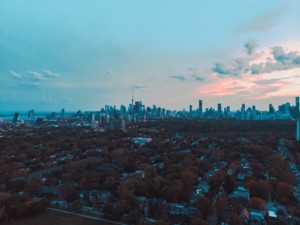| Brought to you by: |
Fabrication techniques honed for racing boats give the dome new life.
Racing boat builder Goetz Composites has crafted many icons of the sea, including ten America’s Cup boats. Now, the company is trying its hand at architectural icons. Several months ago, Goetz began the restoration of Buckminster Fuller’s Fly’s Eye Dome, one of only three existing prototypes of the prefabricated shelters that the designer patented in 1965. The piece, a 24-foot-wide fiberglass shell with Plexiglas eyes, had been neglected for years and arrived at Goetz’s Bristol, Rhode Island, headquarters with chipped corners, peeling paint, and a patina of mold.
- Fabricator Goetz Composites
- Architect Buckminster Fuller
- Location Miami, Florida
- Status Complete
- Materials Fiberglass, steel and aluminum fasteners, linear polyurethane, Plexiglas
- Process Fiberglass restoration, digital modeling
The dome is owned by Design Miami’s founder Craig Robbins, who restored the piece in anticipation of Art Basel | Miami Beach and Design Miami 2011. After being contacted by Dan Reiser and John Warren, who fabricated the original dome prototypes with Fuller, and the Buckminster Fuller Institute, Goetz was eager to participate in the project. “The challenge was to renew the piece, but keep the spirit and the original intent,” said Eric Goetz, the company’s chief technology officer.
A code for assembling the dome had been hand-written on each of its more than 50 fiberglass parts. Goetz’s first step was to engrave the numbers into the fiberglass so nothing would be lost during restoration.
The 40-year-old dome is made with fiberglass mat, a randomly oriented fiberglass with a polyester resin that grows more brittle with time. Where corners were missing, Goetz cast pieces with modern fiberglass and shaped it by hand to match the original. The company created laser scans of each finished piece in the matrix. “Now, the Buckminster Fuller Institute has an as-built, 3-D rendering of what each piece looks like in its archives,” said Chase Hogoboom, Goetz’s president. Accurate to the thousandth of a millimeter, the Rhino files could be used to create new CNC-milled molds should the Institute want to reproduce or replicate a piece.
Goetz outsourced fabrication of the dome’s sixteen Plexiglas lenses, opting to use rolled aluminum angles to hold them in place instead of fiberglass, the original attachment method. After filling extraneous connection holes that had been drilled over the years, the piece was reassembled with its original attachment scheme using new stainless steel fasteners.
Shining with a new coating of linear polyurethane, aircraft-grade paint, the dome will be permanently installed in the Miami Design District. With several large architectural projects already complete, Goetz’s architectural technologies division continues to see an uptick in architects’ interest in composite fabrication. The company is currently working on a rooftop wind vane for the Staten Island Children’s Museum, designed by Marpillero Pollak Architects and slated for completion next year. Perhaps even Fuller’s 50-foot Fly’s Eye prototype will make its way to their shop someday soon.










